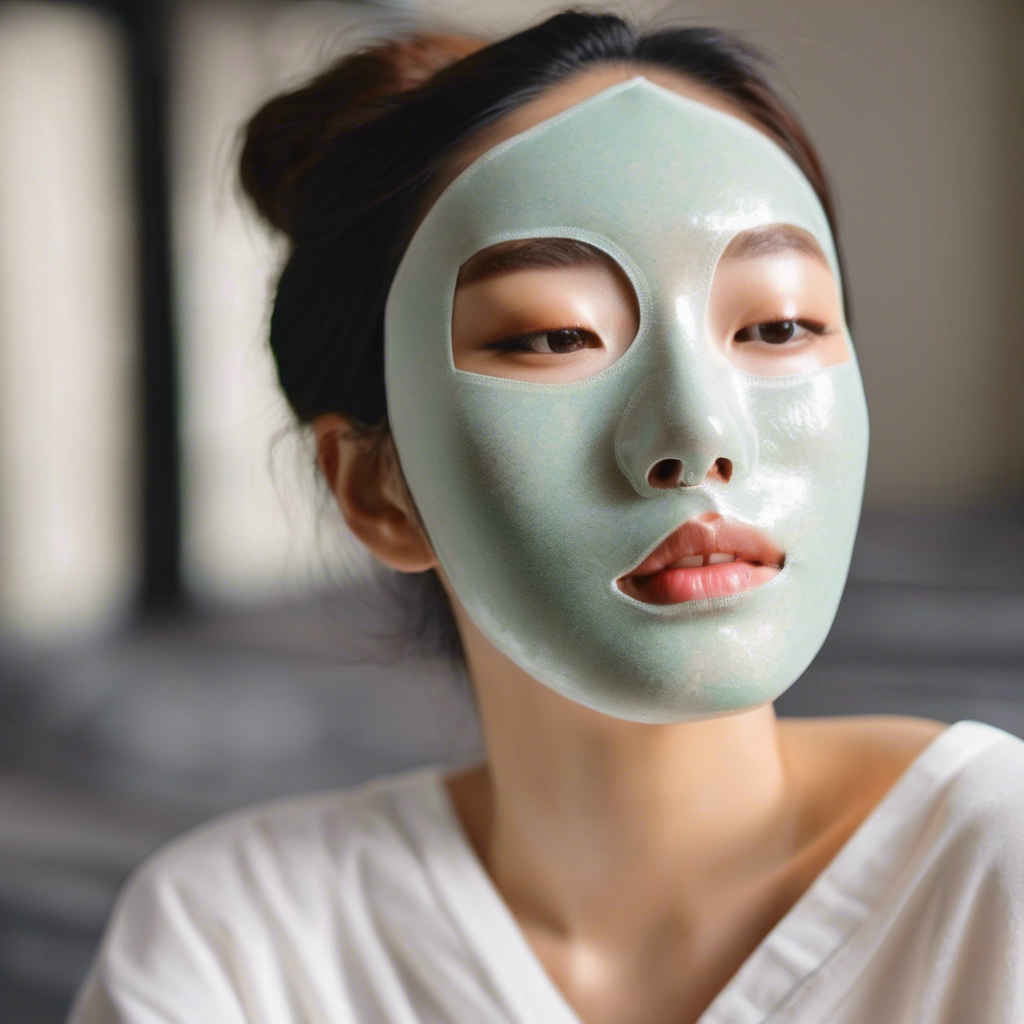
Sheet masks - the secret of radiant skin
Share
With us they still function as an accessory, with Asians they are an integral part of daily skin care. Especially in Korean culture they play a key role in skin care, and are not only part of the daily routine, but also a fashion accessory and a popular gift.
History and origins
The origins of sheet masks can be traced back to Japan, where geishas soaked silk fabrics in rose water to moisturize and nourish their facial skin. This tradition was later adapted and developed in South Korea, which is now at the forefront of production and innovation related to these products. The climate there is steamy so the sheet mask is a savior for the skin, providing relief by calming the pores. There are more than 100,000 types of masks available in Korea alone. Almost every cosmetics manufacturer in Korea has them in their offerings.
Evolution and global popularity
Korean women use sheet masks every day, treating the ritual as a moment of relaxation and a way to keep their complexions in perfect condition. Thanks to their effectiveness and ease of use, sheet masks have gained worldwide recognition, becoming an integral part of skin care in many countries. Masks are also a fashion accessory, and their various packaging and designs make them attractive gifts. Manufacturers are outdoing themselves in creating unique designs, which further increases their popularity.
Types of sheet masks
- material: masks can be made of cotton, silk, biocellulose or hydrogel
- active ingredients: depending on the needs of the skin, the masks are soaked in essences containing hyaluronic acid, vitamin C, plant extracts (such as green tea, aloe vera), peptides or collagen;
- action:
- moisturizing - contain ingredients such as hyaluronic acid or aloe vera, which intensively moisturize the skin;
- nourishing - rich in vitamins and minerals, they often contain extracts of honey, royal jelly or avocado to provide the skin with essential nutrients;
- brightening;
- illuminating - with vitamin C or lemon extract to help reduce discoloration and add radiance to the skin;
- anti-wrinkle;
- firming - contain collagen, peptides or Centella Asiatica (CICA) extract to improve skin elasticity and reduce the appearance of wrinkles;
- cleansing - with activated charcoal, clay or tea tree extract, they help to clean pores and regulate sebum secretion;
- soothing - with aloe vera, Centella Asiatica or chamomile extract, soothe irritation and reduce redness.
- mask colors:
There are masks on the market in different colors: black (containing activated charcoal), green (with green tea extract), pink (with various flower extracts) or white (classic moisturizing)
- layers of masks:
Some masks have two or three layers. Additional protective layers, often made of foil or thicker material, make application easier and protect the mask from damage. Before applying the mask to the face, the protective layer should be removed so that the thin fabric can adhere tightly to the skin.
Advantages of application
- Intense hydration and nourishment: thanks to occlusion, the active ingredients penetrate more effectively into the skin.
- Ease of use: ready to apply, no washing required.
- Quick results: visible results after just one use.
- Variety: a wide range of masks adapted to different skin needs.
How to use
1. Skin cleansing: thoroughly wash off makeup and cleanse your face. Use twice in the evening, once in the morning.
2. Toning: use a toner to restore the skin's proper pH.
3. Essence application: optionally, before applying the mask, apply your favorite Korean essence to enhance the effect of the mask.
4. mask application: take the mask out of the package, remove any protective layers, apply to the face, adjust the necessary (cut with scissors) openings for eyes, nose and mouth.
5. duration of action: leave the mask on the skin for a maximum of 20 minutes, as recommended by the manufacturer. If you feel that the mask dries too quickly, pull it off even after 10 minutes.
6. mask removal: gently remove the mask, and pat the remaining essence into the skin of the face, neck and décolleté.
7. Additional care: after absorbing the essence, apply a suitable moisturizer to lock the active ingredients into the skin and provide adequate protection.
The most common mistakes in applying masks
- Applying the mask to uncleaned skin: this can lead to clogged pores and less effective masks. If you have to apply a mask on makeup or uncleansed skin, it is better not to apply it at all.
- Holding the mask for too long: leaving the mask on the face after it has dried can cause the opposite effect, that is, drying out the skin. A drying mask will absorb all that it has given us.
- Washing off the essence after removing the mask: the residual essence should be patted into the skin, not washed off, so that the active ingredients can continue to work. Therefore, after using the mask, do not wash off the face, but apply another skin care, unless the manufacturer recommends washing off.
Choosing the right sheet mask depends on the individual needs of the skin and the expected skin care effects. Regular use of masks tailored to a specific skin type can bring noticeable benefits and improve the overall condition of the skin. In Korea they are must have products, let's hope that soon there will be one in our country as well. I recommend such skin care wholeheartedly.